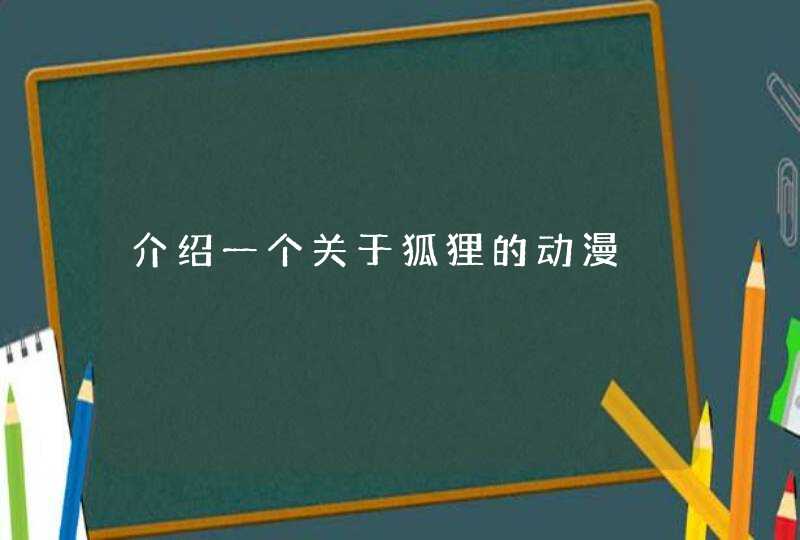to、in、on的区别为:意思不同、用法不同、侧重点不同。
一、意思不同
1to:向,朝,往,对着(某方向或某处);位于…方向
2in:在(某范围或空间内的)某一点;在(某物的形体或范围)中;在…内;在…中;进入
3on:(覆盖、附着)在…上(意指接触物体表面或构成物体表面的一部分);由…支撑着;在(运输工具)上
二、用法不同
1to:to则还可强调所移动的目的地。表示从过去时间算起的一段时间之后,往往与过去时态连用(若接表示时间点的词,也可与将来时态连用)。
2in:in表示在某范围之内,是其中的一部分。注意in与on的使用:on表示“在物体的表面上”,而in表示“在其中”。
3on:强调所移动的方向,而不是目的地表示的时间往往是从过去某一点时间一直延续到说话的时间,因而一般与完成时态连用。
三、侧重点不同
1to:to表示在某范围之外,两者之间可以互相连接,也可以不连接。
2in:in表地点时,指在某一立体空间范围内。
3on:on表示在某范围之外,两者之间一般互相连接。
方位介词短语如下:
1、at once 立刻
2、at last 最后
3、at first 起先,首先
4、at the same time 同时
5、at night/noon 在夜里/中午
6、a bit (of) 有一点儿
7、after a while 过了一会儿
8、by the way 顺便说
9、by the window 在窗边
10、from now on 从现在起
11、in public 公众,公开地
12、in the sun 在阳光下
介词简介:
英语前置词(preposition ,adposition的一种,还有后置词postposition),表示名词、代词等与句中其它词的关系,在句中不能单独作句子成分。
介词后面一般有名词、代词或相当于名词的其他词类、短语或从句作它的宾语,表示与其他成分的关系。
前置词和它的宾语构成介词词组,在句中作状语,表语,补语,定语或介词宾语。同时介词的用法也很灵活,同一个介词可以表达多种意义,介词可以分为时间介词、地点介词、方式介词、原因介词、数量介词和其他介词。
我们已经学习了east, west, south, north, northeast, southeast等一些表示方位的词,在使用这些词表达方位时应注意以下几点: 1 英汉表达的习惯不同: 汉语中习惯把方位词的顺序排为“东西南北”;英语习惯则为north, south, east, west。汉语中用“东南”、“东北”、“西南”、“西北”等表示方向,英语中则用southeast, northeast, southwest, northwest 表达。 2 表示方位的名词east等一般应与定冠词the连用。如: Shanghai is in the east of China上海在中国的东部。 3 表示方位的名词east, west等常与介词on, in, to连用,来表达两地的相互位置,但涵义却各有不同: 1) 表示某地在某一特定区域内的方位时,介词用in。如: Nanjing is in the south of Jiangsu 南京在江苏的南部。 2) 表示某地在某一特定区域外,且两地相互接壤的某一方位时,介词用on。如: Henan is on the west of Shandong 河南在山东的西部。 3) 表示某地在某一特定区域外,但两地相互不相连的某一方位时,介词用to。如: Japan is to the east of China 日本在中国的东面。 4 east, west等方位词既可作名词又可作形容词。 作名词时常用于“ the +方位词 + of”结构中,表示“……部”;作形容词时常构成具有行政区划意义的专有名词。试比较: She works in the north of China她在中国的北部工作。 She works in North China 她在华北工作。 east, west作形容词时意为“东方的;东部的”、“西方的;西部的”。一般说来,east, west等常构成专有名词,且具有一定的政治意义或社会意义,其划分较为明确;而eastern, western只是单纯从地理方位上讲,无政治或社会意义,且划分较为模糊。如: East China华东 (特指行政区划中的东部几省);eastern China中国东部 (泛指中国的东部地区)。 此外,south与southern, north与northern, west和western等的区别均与上述相同。 5 southward(s), northward(s), eastward(s), westward(s)可用作副词或形容词。如: We must travel southwards (travel towards the south) to get to the South Pole要到南极去我们必须朝南走。 Rocks lay eastwards of the ship's course 轮船航线的东面有礁石。 Our route is in an eastwards direction 我们的路线是向东的。 请同学们做下面的练习,看你们是否能找到“东南西北”: 1 Harbin is in the______ of China 2 Liaoning is ______ the west of Jilin 3 Guangzhou is in the ______ of China 4 Fujian is ______ the southeast of Hubei 5 Xining is in the ______ of Qinghai 6 Guilin is ______ the southwest of Changsha 7 Inner Mongolia is ______ the north of China 8 Yantai is an ______ city of China 9 Gansu is a ______ province of China 10 Guizhou is ______ the west of Hunan and is to the ______ of Henan, and is to the ______ of Guangdong 做好了给答案哦
方位介词歌:
in里面on上面;
above 上方不要忘;
under在下beside旁;
between 夹在两者间,还有behind后面藏, 前面位置很重要;
in front of要记牢。
介词是英语学科中介词语法的一种,指代方位的介词。在初中英语中,有许多表示事物存在的方向和位置的介词,我们称之为方位介词。
介词的种类很多。在初中英语中,有许多表示事物存在的方向和位置的介词,我们称之为方位介词。
如in(在……里),behind (在……后面),down (向下)等等。其中有些方位介词的意义比较接近,在用法上很难区分,如on, over, above都有“在……之上”的意思,但含义却不尽相同。通过适合自己的方法,我们很容易掌握这三个介词的用法,以至于掌握所有方位介词的用法。
介词是英语学科中介词语法的一种,指代方位的介词。在初中英语中,有许多表示事物存在的方向和位置的介词,我们称之为方位介词。
举例:
at (1)表示在小地方; (2)表示“在„„附近,旁边”
in (1)表示 在大地方; (2)表示“在„范围之内”。
on 表示毗邻,接壤
to 表示在„„范围外,不强调是否接壤
He arrived at the station at ten。
He is sitting at the desk。
He arrived in Shanghai yesterday。
Jiangsu lies in the east of China。
Russia live on the north of China。
Fujian is to the south of Jiangsu Province。
above, over, on 在„„上
above 指在„„上方,不强调是否垂直,与 below相对;
over指垂直的上方,与under相对,但over与物体有一定的空间,不直接接触。
on表示某物体上面并与之接触。
The bird is flying above my head。
There is a bridge over the river。
He put his watch on the desk。
below, under 在„„下面 under表示在正下方。
below表示在„„下,不一定在正下方 There is a cat under the table。
Please write your name below the line。
方位介词
1、at表示"在处",一般指较小的比较具体的地点。
如: He isn't at school He is at home 他不在学校,他在家。
2、in表示"在内部;在里面"的意思。如: What is in the box 盒子里有什么
3、on表示"在某物的上面",但两者互相接触。
如:My books are on that table 我的书在那张桌子上。
4、under表示"在某物垂直的正下方",两者之间不接触。 如:My cat is under my chair 我的猫在我的椅子下。
5、behind表示"在某物体的后面"。如:The broom is behind the door 笤帚在门后。
6、in front of表示"在的前面",正好与behind相反。
如: There are some big trees in front of our classroom 我们教室前面有几棵大树。
7、near表示"在某物体的附近",意为"接近、靠近"。 如: The ball is near the door 球在门旁边。 巧用介词表方位。
1 in 在……之内
例句:
The students are reading in the classroom
学生们在教室里读书。
2 on 在……上面
例句:
The boat is on the river
那条船在河上。
3 over 在……(正)上方
例句:
There are several bridges over the river
河上有好几座桥。
4 under 在……(正)下方
例句:
The boat sailed under the bridge
船在桥下行驶。
5 above 在……上方
例句:
The plane flew above the clouds
飞机在云上飞行。
6 below 在……下方
例句:
The sun sinks below the horizon
太阳沉没在地平线下。
7 by 在……旁边
例句:
Our house is by the river
我们的房子在河边。
8 beside 在……旁边
例句:
Come and sit beside me
过来坐在我旁边。
9 near 在……附近
例句:
Idon’t need a car because Ilive near thecity centre
我不需要汽车,因为我住在靠近市中心
10 next to 紧挨……
例句:
My best friend sits next to me in class
上课时我最好的朋友坐在我的旁边。
11 behind 在……后面
例句:
Olive hid behind a tree
奥列弗藏在一棵树后面。
扩展资料:
区别
几组方位介词的区别
方位介词in, on, to的区别:
1in表示"在……范围内”,还表示“在…之中”
Chongqing lies in the southwest of China
2on表示“与……毗邻,接壤”
Canada lies on the north of America
3to表示方位,不接壤
Hunanlies to the east of Zhejiang
表示地点位置的介词:
1at, in, on, to
at 用于小地方,at school, at home
In 用于大地方, in Beijing, in China
On在……上面, on the map, on the table
To到…… To Chongqing
2Above, over, on
Above在……上方(高过另一个物体,不强调垂直)
The airplane flies above that tall building(不在正上方)
over在……上方(垂直上方)
The bridge spans over the river
On在……上面(物体表面有接触)
There's some water on the floor, so you should be careful
3Below, under在……下面
Under在……下(正下方)
The cat lies under the chair(正下方)
Below在……下(不一定是正下方)
The cat lies under the chair(不是正下方)
4in front of, in the front of 在……的前面
in front of 在外部的前面,两个东西是独立的,相反的是behind
The building is in front of the hospital
The building is behind the hospital
In the front of在内部的前面,属于其中的一部分,相反的是at the back of
The girl stands in the front of the classroom
The girl stands at the back of the classroom
5Beside, near, by
Beside在旁边
Near在附近
By在附近,非常靠近
参考资料:
方位介词_百度百科
表示场所的介词:at,in,on,under,by,near,between,around,opppsite 表示方向的介词:into,out of,along,acroos,through,up,past 1At在某地(表示比较狭窄的场所) eg I’ll meet him at the station 2In在某地(表示比较宽敞的场所) egMike works in th prison 3On在……上面,有接触面 egThere are two maps on de wall 在……靠近……的地方 eg He is working on the farm 4Above在……上方 egOur plane flew above the clouds 5Over在……正上方,与under反义 There is a light over Miss Li 6Under在……下面,在……之内 egThe dog is under the table 7Below ……下方(不一定是正下方) egThere are a lot of fishes below the surface of the water 8Near近的,不远的 egIs there a bus stop near here 9By 在……旁边,距离比near近 egThe boy is standing by the window 10Between 在两者之间 eg Wath’s the different between A and B 11Among 在三者或更多的之中 egThey live among the mountains 12Around 环绕,在……周围,在……四周 eg We sataround the table 13In front of 在……的前面;在……的前部 egThere is a tree in front of the house 14Behind 在……后面 egThere is a tree behind my house 15Opposite 在……对面 egHe stood opposite me 16In 在……之内,用于表示静止的位置 egThe students are in the classroom 17Into 进入 egHe jump into the water 18Out of 和一样,也表示有一定的运动方向 egShe was looking out of the window 19Along沿着 egI was walking along the river 20Across 横过 egI go across the street to do some shopping 21Past 经过 eg Every day he runs past the city hall 22Through 贯穿,通过 egThe river was through the city 23To 到达……地点(目的地)或方向 eg Tom has gone to school 24For表示目的地,“向……” 表目的时,一般是和固定动词搭配 leave for 动身去…… start for出发去…… egI’ll leave for America next week 25From 从……地点起 egHow far is it from our school to the hospital
以上就是关于方位介词to、in、on的区别全部的内容,包括:方位介词to、in、on的区别、方位介词短语、谁能告诉我几个英语里常用的方位介词,带汉语例如behind(在...后面)等相关内容解答,如果想了解更多相关内容,可以关注我们,你们的支持是我们更新的动力!


